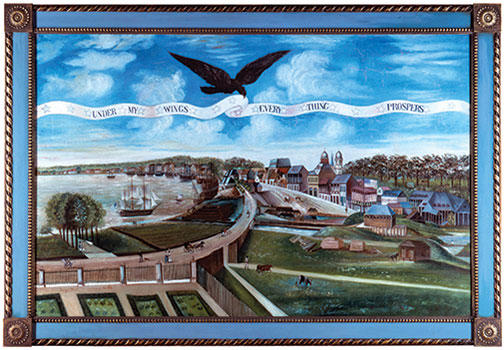Jefferson's Great Bargain
One of the most transformative documents in American history arrived in Thomas Jefferson’s mail July 14, 1803. It was a proposed treaty from the French government, offering to sell the Louisiana territory to the United States for approximately $15 million, a figure that later was reckoned to be about 4 cents an acre. It would stretch the boundaries of the United States from the Mississippi River into the Rocky Mountains, nearly doubling the country’s territory.
The Louisiana Purchase dominates Volume 41 of The Papers of Thomas Jefferson, the latest installment in a project that has been underway at Princeton since 1943. The new volume, which covers the period from July 11 to Nov. 15, 1803, accompanies Volume 11 of Jefferson’s retirement papers, which are edited by J. Jefferson Looney *83 at the Thomas Jefferson Foundation at the Robert H. Smith International Center for Jefferson Studies at Monticello. Both volumes are published by the Princeton University Press.
Jefferson’s purchase was widely hailed — “Let the Land rejoice, for you have bought Louisiana for a song,” Horatio Gates exulted — but it also was revolutionary, and the president was unsure how to proceed. Neither he nor the French knew exactly where Louisiana’s boundaries were, and it was not clear whether the treaty also required a constitutional amendment. Jefferson was inclined to think that it did, but changed his mind when his advisers warned that the French were having second thoughts and a delay might sink the deal. “[T]he less we say about constitutional difficulties respecting Louisiana the better,” he advised Secretary of State James Madison 1771. By the time the Senate ratified the treaty Oct. 20, Jefferson already had commissioned Meriwether Lewis and William Clark to explore the new territory.
The volume also includes the preparations for his annual message to Congress. Unlike his predecessors, Jefferson chose to deliver his messages in writing, a tradition that would continue until Woodrow Wilson 1879 revived the practice of presidents reading their annual message — now called the State of the Union address — in person.
A staff of nine researchers and editors is working on the 70,000 documents in Jefferson’s papers. James McClure recently took over as the project’s general editor, succeeding Firestone Library senior scholar Barbara Oberg. He hopes to finish editing the papers by 2026, the bicentennial of Jefferson’s death.












No responses yet